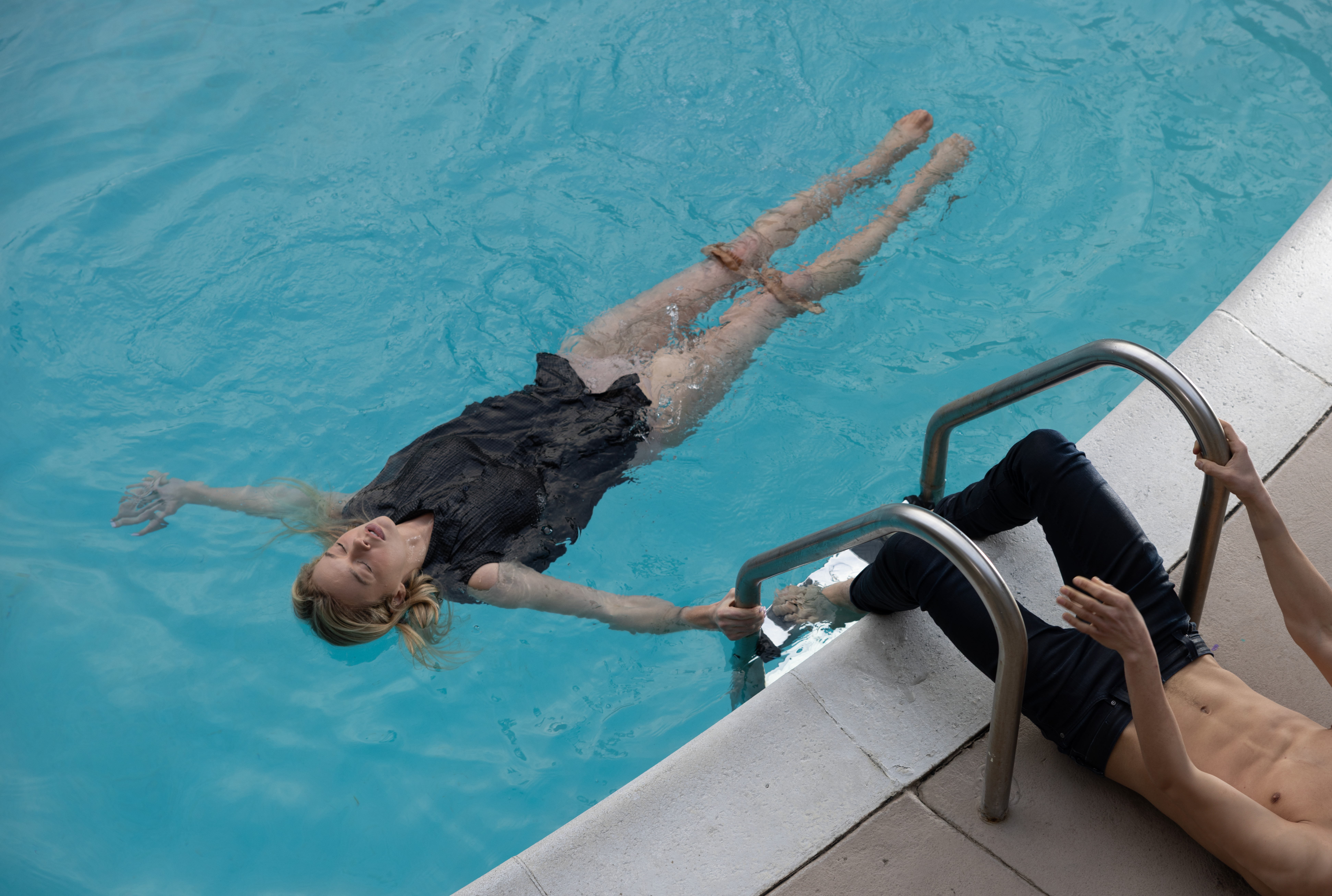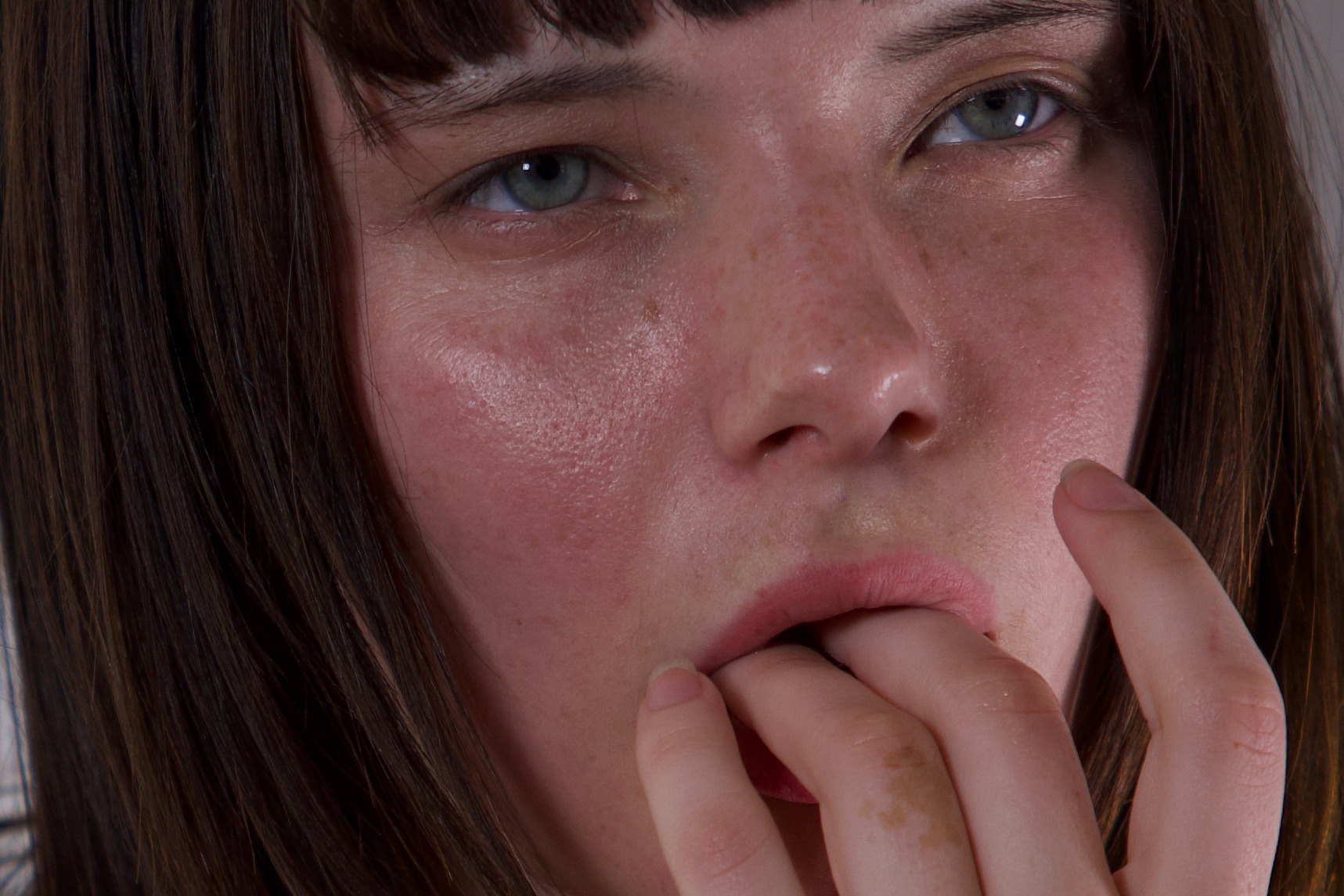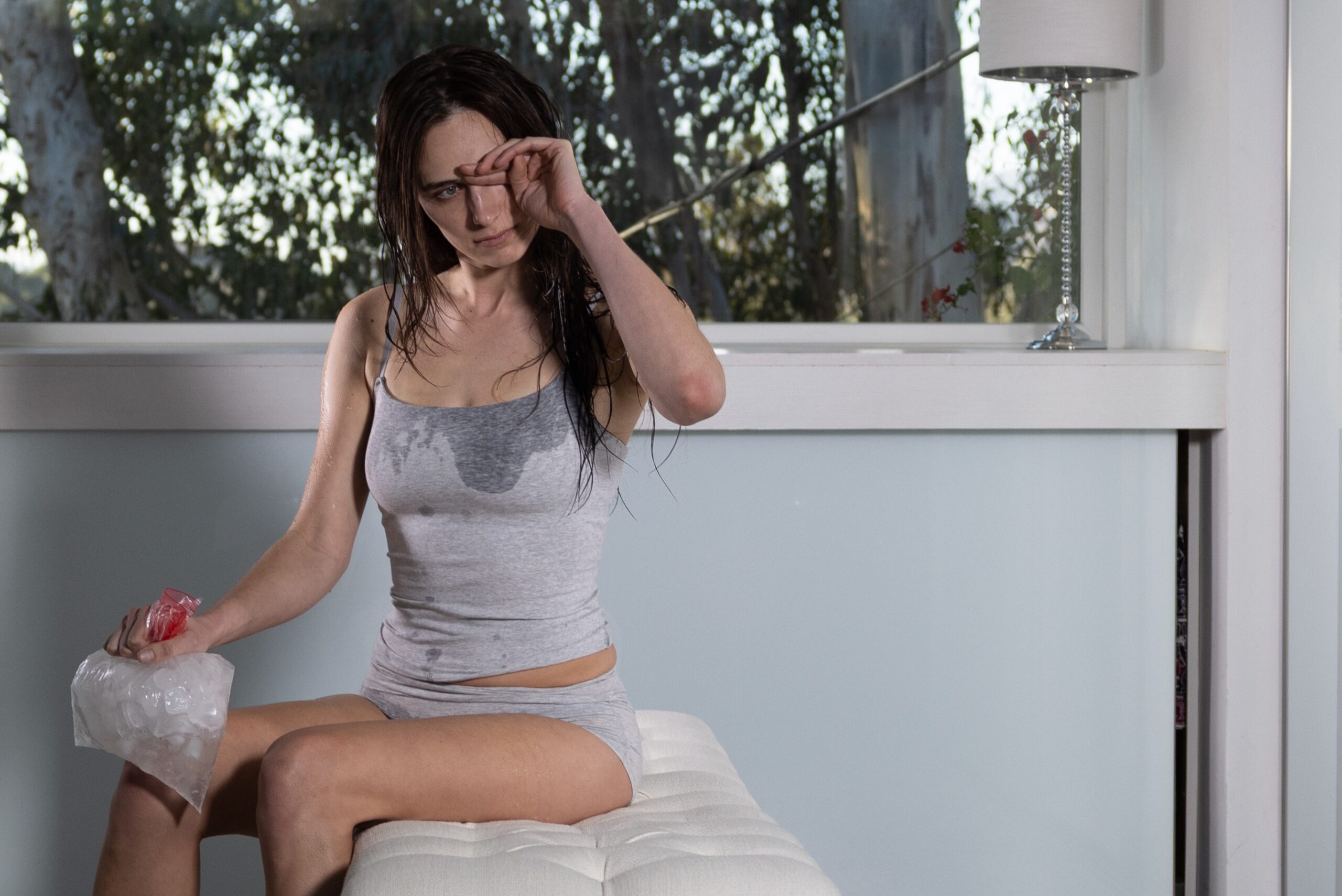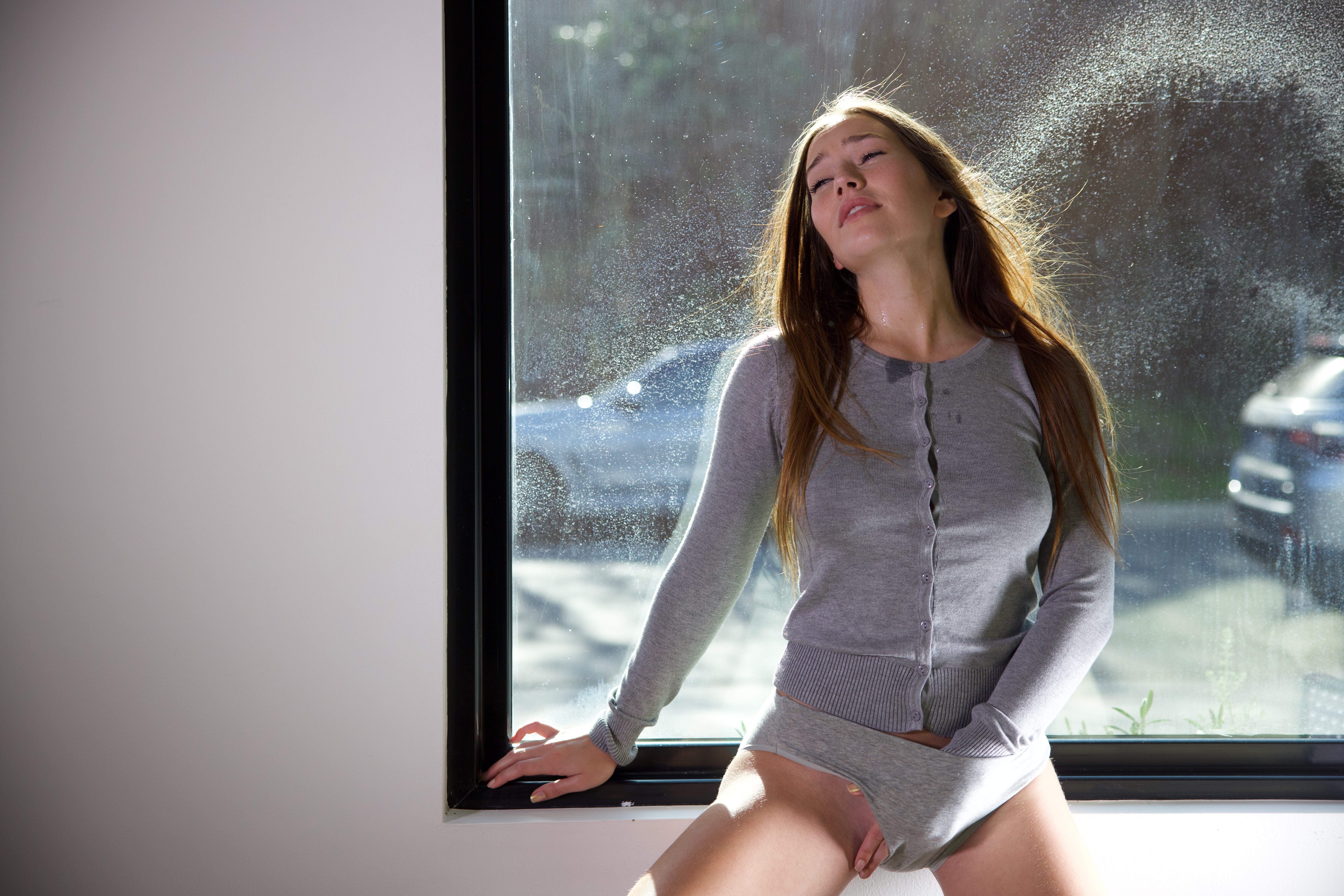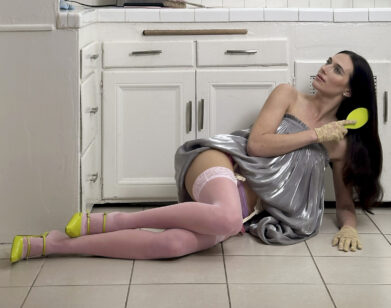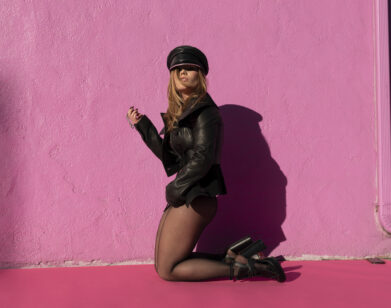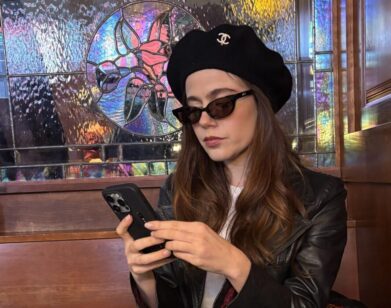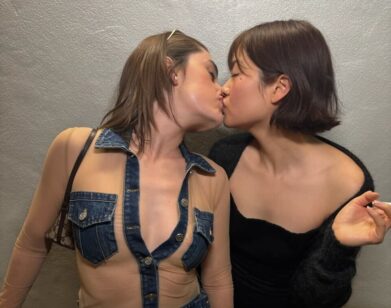CLICK
In Chessa Subbiondo’s Photographs, Hot Girls Are Always Crying
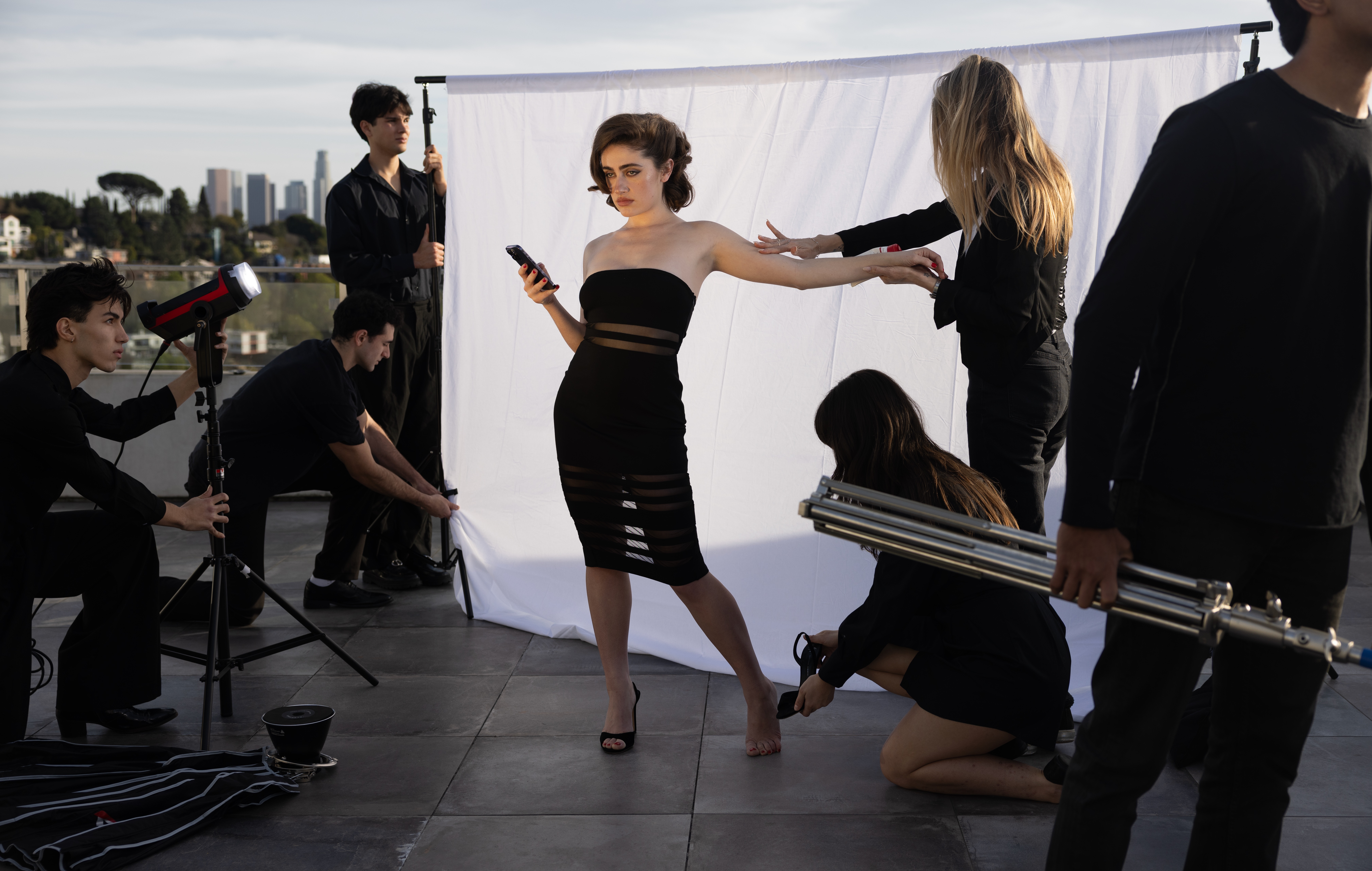
Chessa Subbiondo’s debut photo book, SPLINT, is a study in tension and restraint. Shot in blank and ambiguous interiors with stripped-down styling, the images evoke normcore taken to its evolutionary endpoint: deadpan, composed, and almost medically sterile. “People use the word sterile as an insult,” Subbiondo explains, “but I love it.” And it shows—there’s a cold precision in the work, one that’s quietly disorienting and left wide open for interpretation. To mark the release of the monograph— which features a number of Subbiondo’s friends and frequent collaborators, including Lexee Smith, Devon Lee Carlson, and Rachel Sennott—she sat down with us to talk a bit the mysteries of WSA, why tattoos are out of vogue, and how she keeps her vision timeless.
———
JULIAN RIBEIRO: Boom.
CHESSA SUBBIONDO: Hi.
RIBEIRO: How are you?
SUBBIONDO: Good, how are you?
RIBEIRO: I’m good. I’m sending a photo of us to Sephira [Street] and then we can get into this.
SUBBIONDO: Oh my god. Please do.
RIBEIRO: Dude, you have a book. Congratulations.
SUBBIONDO: I know. I’m so excited.
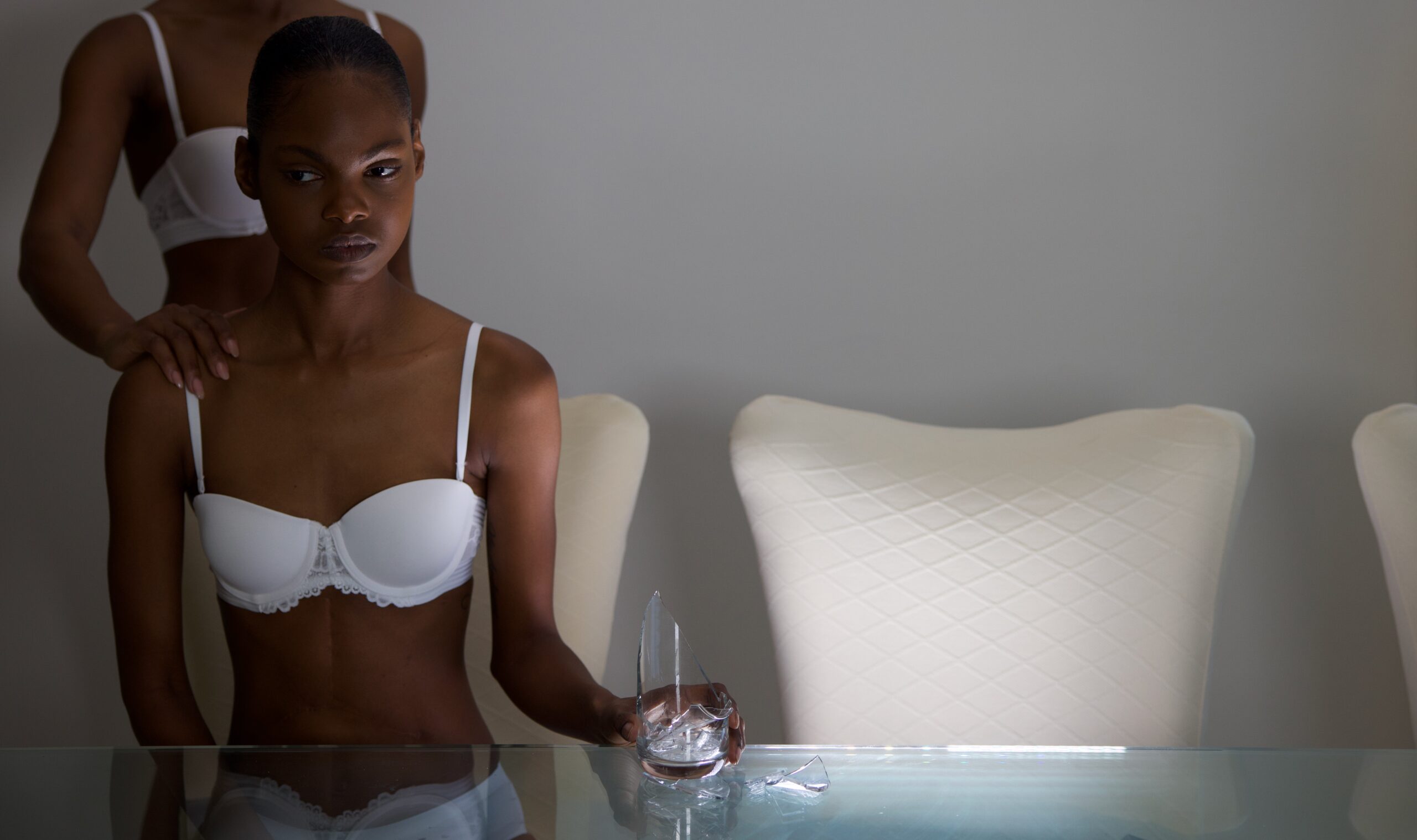
RIBEIRO: This is your first book. How does it feel?
SUBBIONDO: I’m so happy about it. It’s my first time selling anything to people, which is nerve-racking, but it’s also my first time having something physical that’s not just a framed photo.
RIBEIRO: I feel like a book is like an 18th birthday or something. It’s like you’re growing into a new chapter of being an artist.
SUBBIONDO: Exactly. That’s also why I waited to make this, because I wanted to make sure it will live forever. Like an Instagram post, you can just delete if you don’t like your old shit. But I wanted to make sure it’s a body of work where if I look at it in 10 years, I’m like, “My work will change, things will change, but this will still feel like a constant streamline.”
RIBEIRO: Yeah. Also, I love the golf ball through the windshield cover.
SUBBIONDO: That was actually because my windshield was punched a while ago. It was a fist that hit it, that exact car. So that’s what the image is replicating. I wanted to memorialize that moment because I was so broke that I didn’t get my windshield fixed for two weeks. And it just happened to be on the side where I could still see out of it, so I’d just drive around with a crack.
RIBEIRO: The busted whip is sick. As I move through the book, it feels very clean, but not sterile. There’s something almost medical about it sometimes, with the lighting and the environments. I’m looking at this photo of Sephira in—is that WSA?
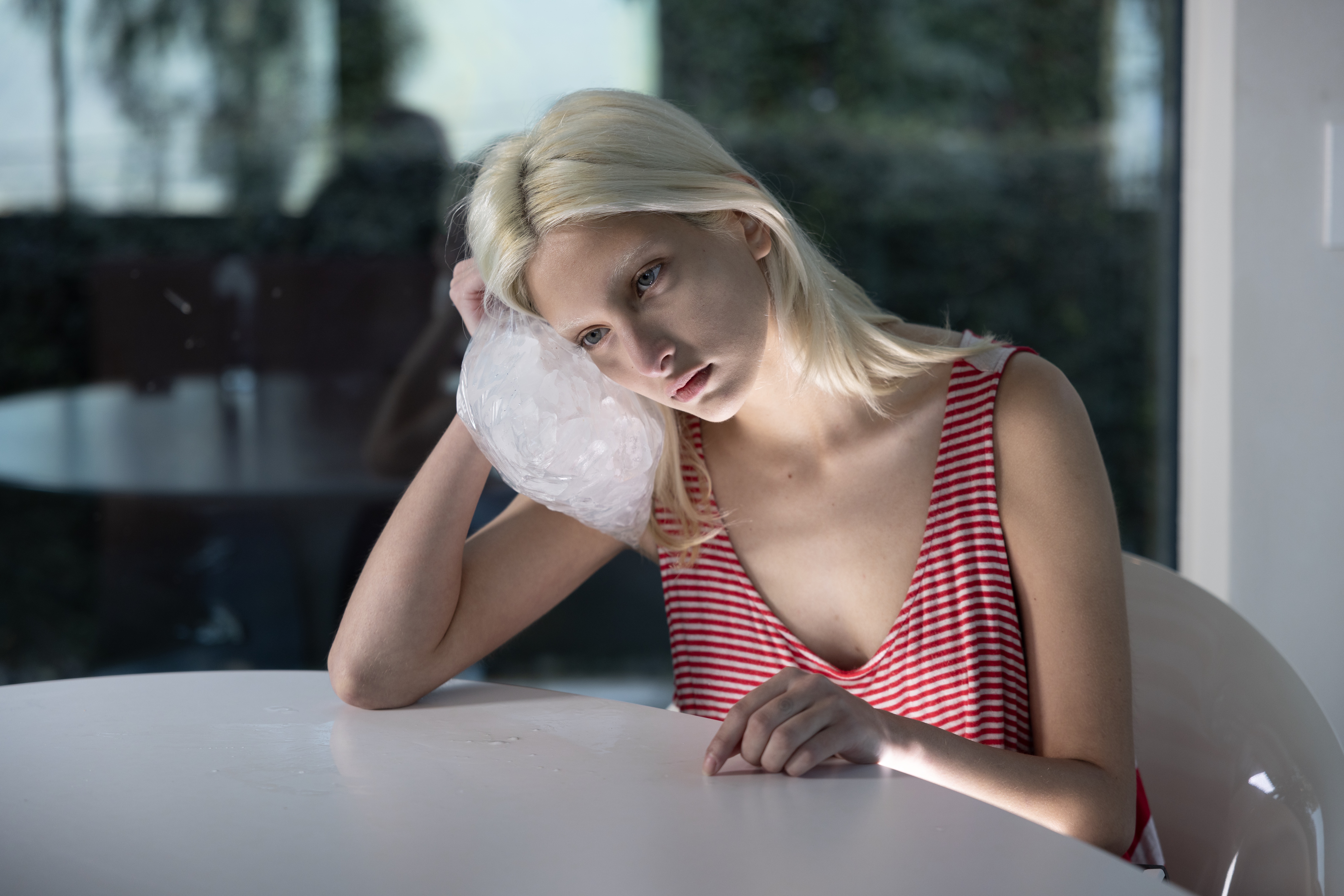
SUBBIONDO: Yeah, it is.
RIBEIRO: In the empty WSA office, the clean carpet, the snow, the white couch. Talk to me a little bit about your perspective here.
SUBBIONDO: People use the word sterile sometimes as an insult, but I love it. I love when things feel really clean and really empty, and for this, it’s really heavily reliant on location. I was really specific about wanting to stick to certain color schemes, certain things that feel ambiguous where like, that photo of her on the floor could also be a hotel conference room. It could also be a carpet of a bedroom in a really rich home, or in a low-grade hotel. You know what I mean? And I think it’s nice that you can’t place exactly what class it is or where it’s taking place. I feel like it was important to me for this to not feel too of 2025. And that plays into location, clothing. It’s very mundane. There’s no branding. There’s nothing that feels like a trend right now.
RIBEIRO: Yeah. I see your point about not wanting it to be very 2025. This is also a random comment: I don’t think there’s a single tattoo visible in any of these photos.
SUBBIONDO: It’s funny you mention that because I was so specific about it. Serena Warren has tattoos up her whole fucking body and I was like, “Just so you know, I’m taking all of them off.” So many tattoos are of a certain time. Like, a fucking pair of dice with flames—if you see that it dates the image so instantly. So that’s why we took them off of everyone. But we didn’t do any body makeup, we just wiped it all out in post.
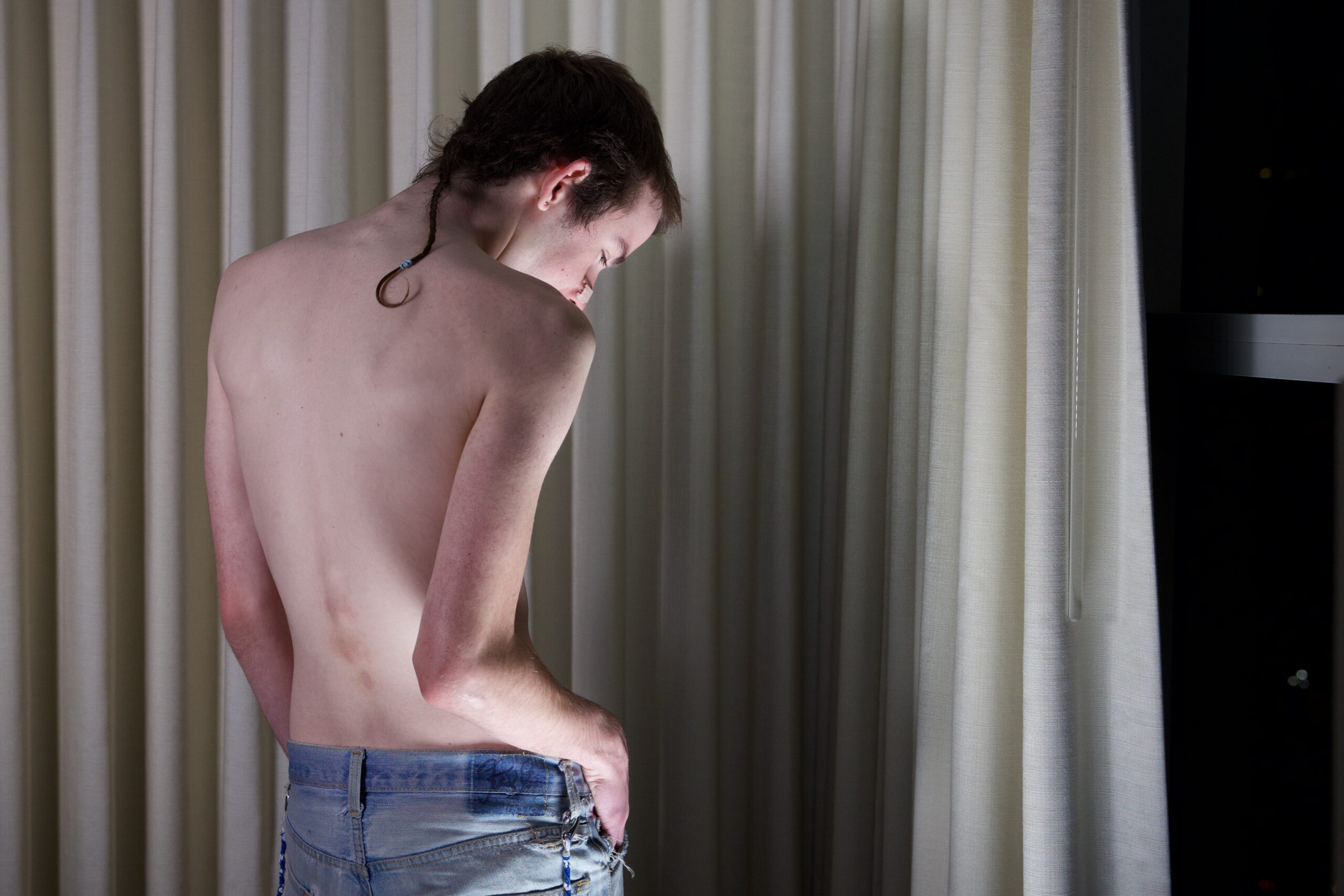
RIBEIRO: It’s so corny to say out loud, but the new tattoo is no tattoos.
SUBBIONDO: It’s true.
RIBEIRO: Also, on the presentation of people, the styling, I totally take your point on the color and the vibe of the styling because everything is very neutral. Nothing’s actually too dressy. There’s this Rachel Sennott photo where she’s in heels, but it’s pretty taken back. And then there’s moments with Lexee [Smith] where she’s appears nude in this photo but it’s very white T-shirt.
SUBBIONDO: It’s very normcore, I guess. For me, none of that was lack of effort or laziness. I’d be sitting there looking at three separate V-necks like, “Which one should we use?” It was really important to put people in things that feel super boring and mundane. But also, again, it’s like if a girl’s wearing a gray shirt, that could have been taken 10 years ago, it’s probably going to still stay standing 10 years from now. This is not a fashion book at all, and I think it puts a lot more on the emotion the model is conveying, or the light, or the pose, as opposed to when you’re looking at a photo because you like the outfit, if that makes sense.
RIBEIRO: 100%. And I almost have come full-circle, where it almost reads as a fashion story, but it doesn’t read as a fashion story. It’s almost like Model’s Own, but it’s all too specific to be Model’s Own. You know what I mean?
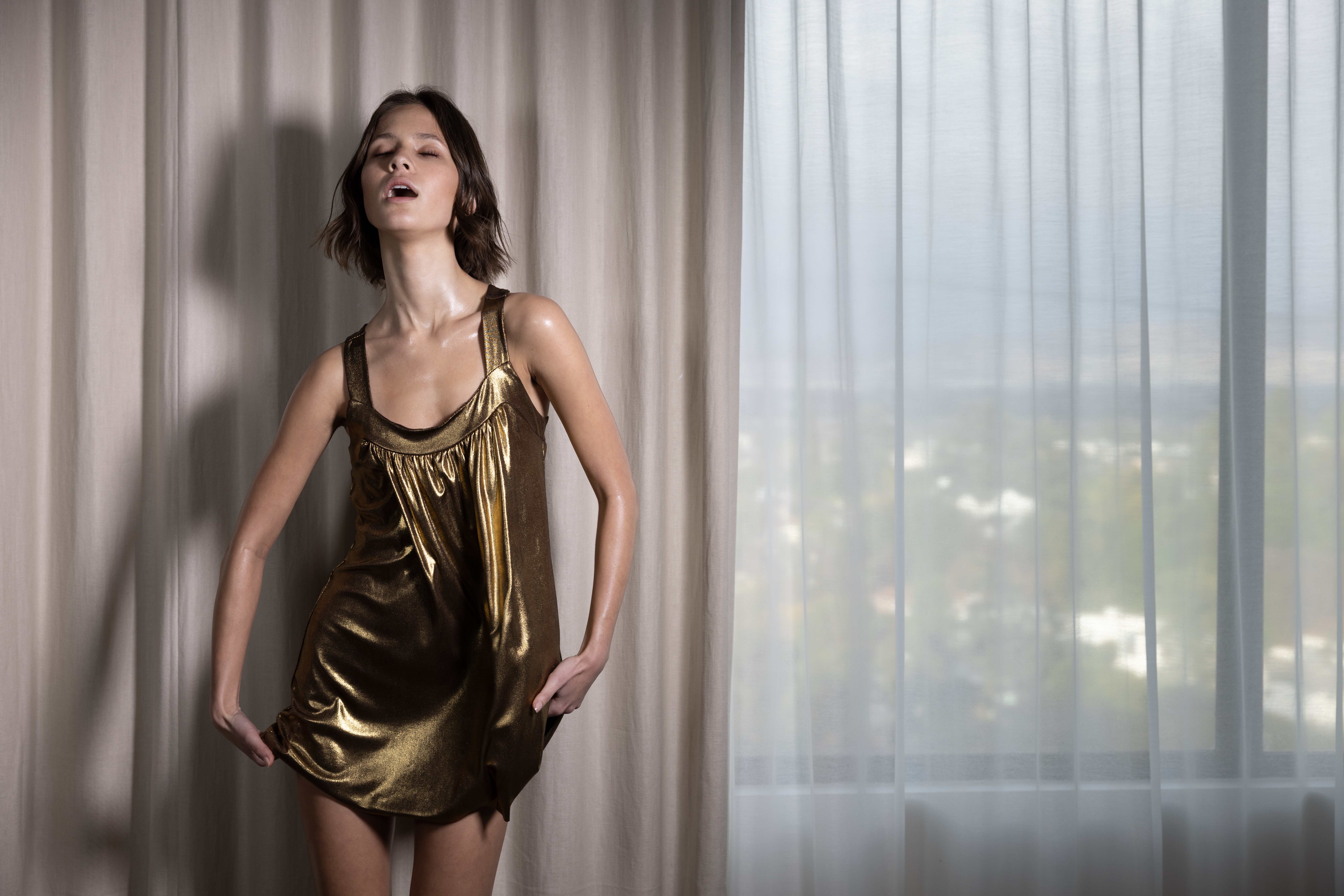
SUBBIONDO: Yeah.
RIBEIRO: There’s the girl with the gauze wrap. There’s this girl on the bed with her eyes covered. It’s a lot of open necks. It’s your neck, your eyes are covered. It’s sexy. It feels like it speaks to something that is now, but also like, no one’s wearing Isabel Marant.
SUBBIONDO: Exactly. And this is no shade, I think fashion right now is great, but I wanted to be able to appeal to an audience that is young and is wearing Isabel Marant and is in this whole thing, but also at the same time show there’s a way to strip it back. And I feel like it makes it more cinematic because it’s like, there’s styling for an editorial and then there’s styling for film, and that’s a character. I think of all of these models as characters in a scene, where if you pushed play on this photo you’d say, “What the fuck is going on?” You know what I mean?
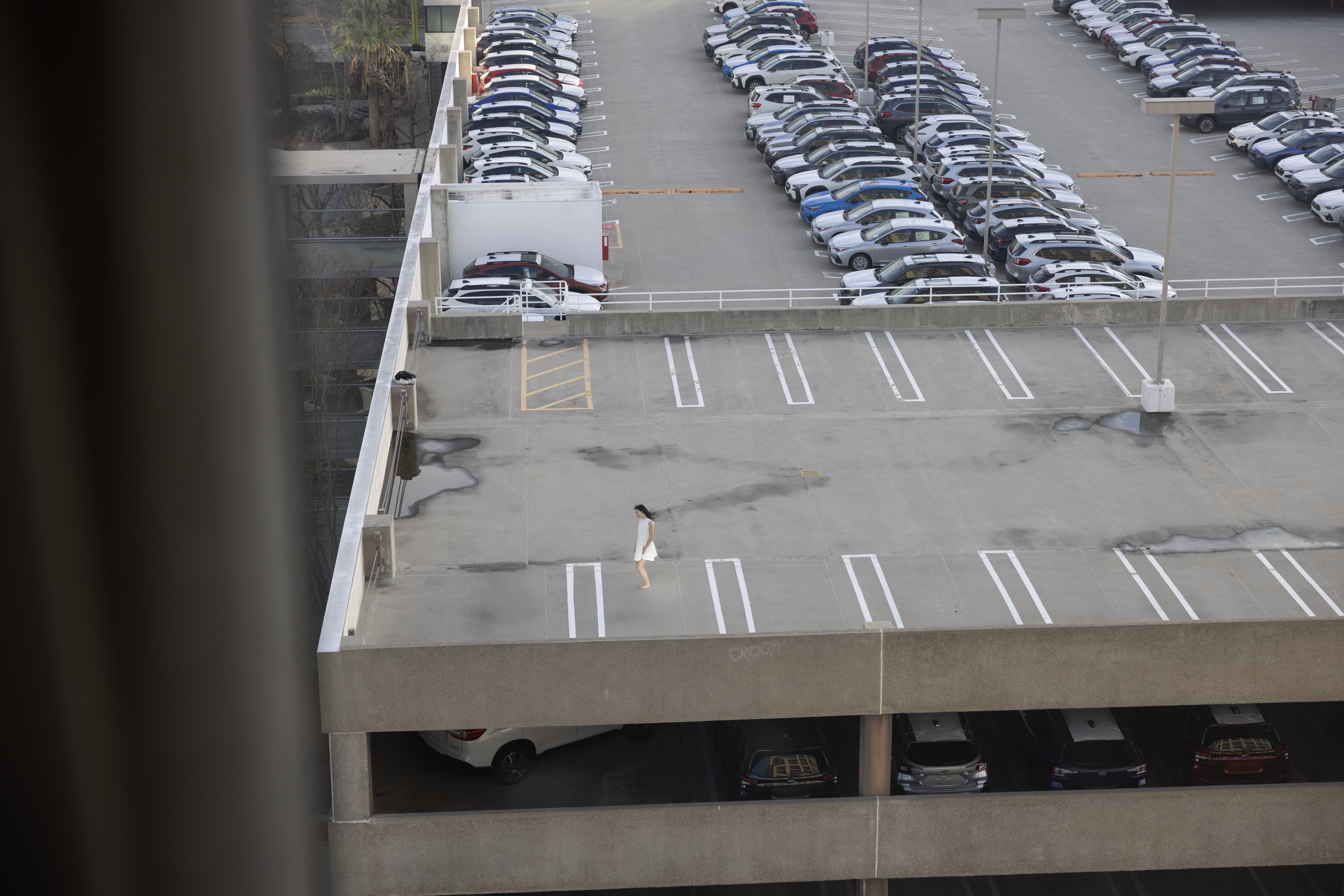
RIBEIRO: Yeah. I’ve seen in your photography where you do this idea that someone’s on a desk, but then there’s a door being opened in a different side of a room, or there’s a girl in the very front and then there’s someone out of focus or something in the back. There’s definitely an aspect of it that there is some kind of dialogue happening in this scene, even if it’s supposed to be a little icy.
SUBBIONDO: Absolutely. I love using people as props, not just in the sense of main talent. I love when you add that element and there’s someone walking away, or walking out of frame, or it looks like someone’s glance is staring at someone. I never want people to look at the lens.
RIBEIRO: I don’t like the framing of this question, but how does femininity play into your work? This is a book of mostly women.
SUBBIONDO: Honestly, it wasn’t even on purpose. Honestly, I just like photographing women more because it is easier. There’s a fluidity where I’ll tend to act out a pose, and it’s so much easier to give that direction to women.
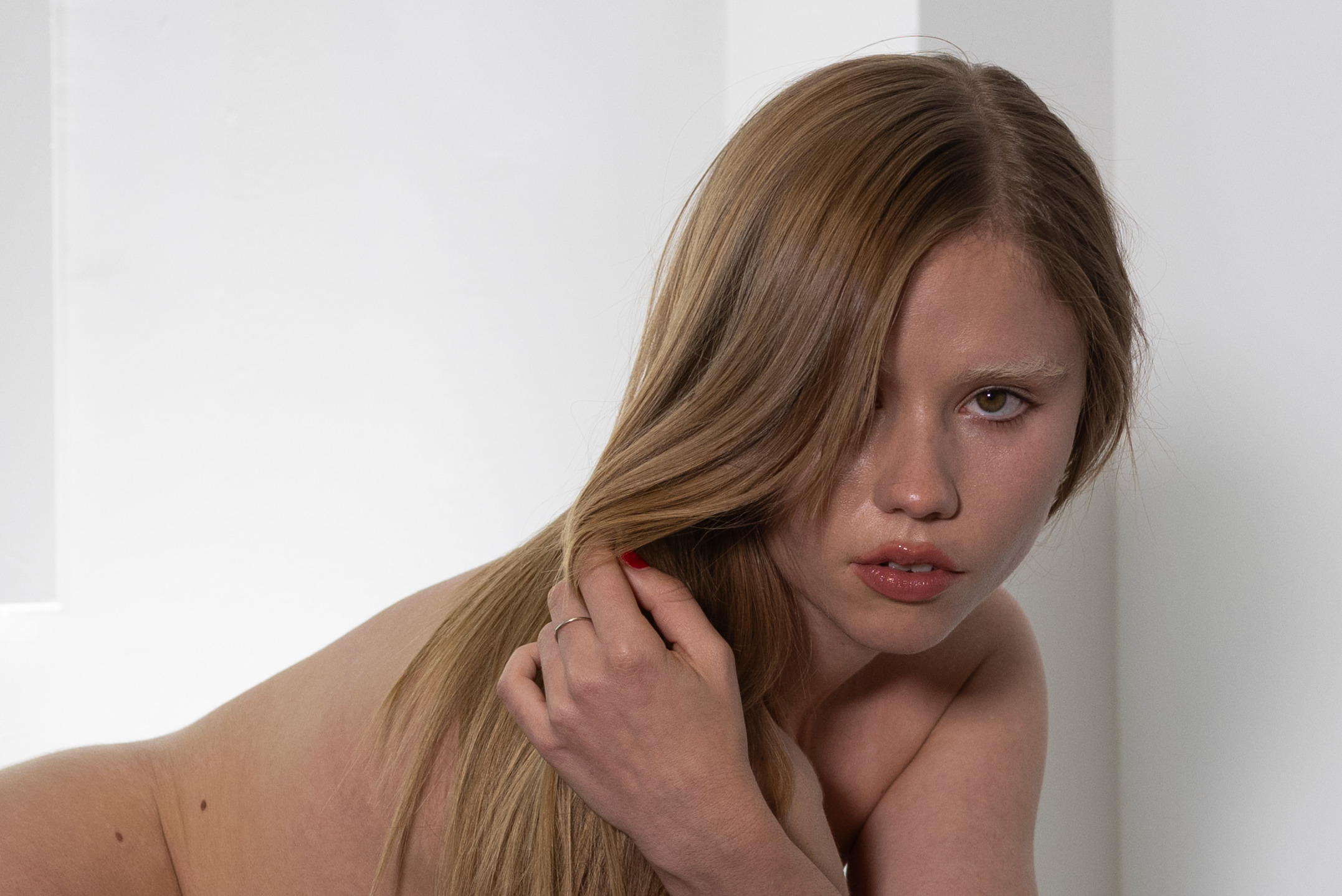
RIBEIRO: Do you have a favorite photo in the book?
SUBBIONDO: I have a few. There’s this girl Parker and she’s putting her fingers in her mouth. I love that photo a lot, and I was really proud of that one. But then there’s also so many that I love just because I associate them with memories. Honestly, the one of Sephira where she’s sitting there at WSA on the skyline, we took that photo literally when we were shooting Tyla for Interview. Sephira was PA’ing for me, and we saw this view and Tyla was running late, and I’m like, “Holy shit, strip down right now.”
RIBEIRO: Oh, I love that. That building really is actually very coded for you because everything’s ready to rent, or it’s under construction, but it’s always very empty.
SUBBIONDO: It’s so empty. It’s like, I literally loved that building when we found it and then I had never heard of it, and then I feel like after we shot there, I’m always seeing people tag WSA.
RIBEIRO: I heard they have a really fabulous gym or a pool or something.
SUBBIONDO: Oh, wow. I love to swim.
RIBEIRO: Well, we’ve covered a lot of ground. My actual last thing is, there’s a lot of tears in this book.
SUBBIONDO: Yeah, there are. There was this photo we did where it’s her, she’s crying as she’s masturbating, she has her hands in her underwear. And at first we were going to do headphones and have her crying to music as she’s touching herself. And then I was like, no, I just want to have that be a moment and it feels like someone could see it and be like, “What the fuck? Is she crying because it’s so good? Or is she crying because she’s sad and she’s getting off on that?” There’s so much packed in that.
RIBEIRO: The transformative power of tears. Well, thank you again for taking time to talk to me, my love.
SUBBIONDO: Thank you.
RIBEIRO: I will see you hopefully in New York very soon. If not, I’ll be in L.A. next month. Come kick it.
SUBBIONDO: Absolutely.
